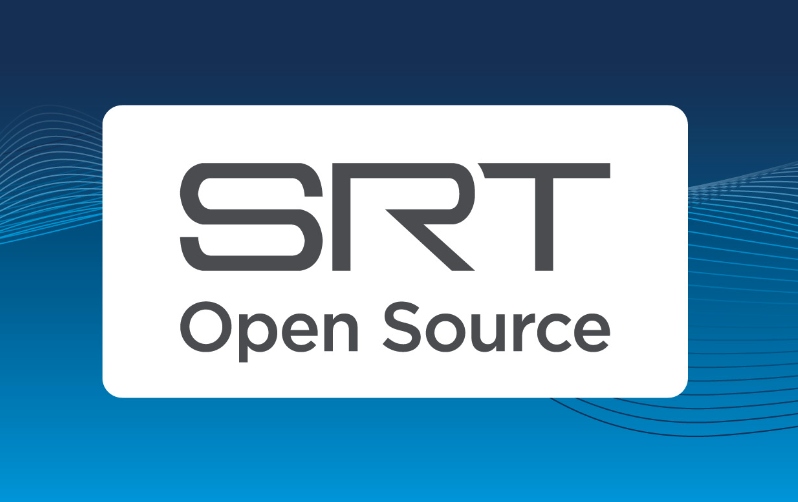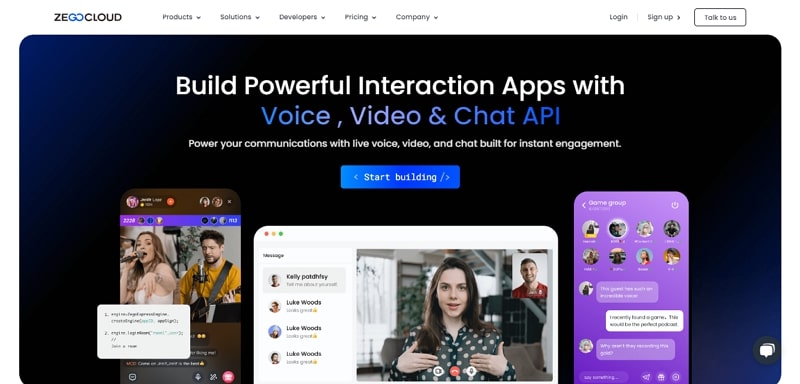In simple terms, RTMP streaming permits live broadcasting across the internet with state-of-the-art technology. Developed by Macromedia, RTMP streaming offers smooth audio, video, and data transmission on the internet platforms. Moreover, it is famous among streamers for its low latency and stable connection for smooth live streaming. Hence, we’ll narrow down how RTMP streaming operates, its alternatives, and why it remains a go-to solution for live content creators.
What is RTMP?
It is a revolutionary protocol streamers use to stream audio, video, or any data on the Internet for effective communication. Though it was invented by Macromedia, it is now under the management of Adobe. To facilitate hassle-free media delivery, RTMP operates by maintaining a smooth connection between the client and server. In addition, it ensures low latency so that users can stream high-quality content without any hindrance.
RTMP facilitates video data ingestion, capturing live video content from the source and transmitting it to the server. This technical process ensures that the RTMP server can effectively distribute the video data to viewers. Furthermore, with RTMP streaming, users can enjoy high-quality live video content with zero buffering. This trait makes this platform a popular choice for content creators and broadcasters who need reliable streaming.
What is RTMP Streaming?
RTMP streaming is the procedure of audio or video broadcasting on the Internet. This approach is widely used in live broadcasts, webinars, and gaming platforms. Hence while streaming, RTMP streaming features a low-latency connection between the media server and the viewer for a real-time connection.
RTMP sustains an open connection that lets a nonstop flow of information for live video streaming. Additionally, adaptive bitrate streaming automatically tailors the video quality according to the viewer’s internet quality. Furthermore, the RTMP protocol is mainly famous due to its ability to support both live and on-demand streaming content.
The Advantages of RTMP
Now that we understand the RTMP protocol and how it works, dive into the key benefits of streaming. While exploring these advantages, users will learn why RTMP remains a top choice for broadcasters.
- Low Latency: One of the foremost significances of RTMP is low latency, which minimizes the delays between the broadcast and viewers. This means that viewers experience smooth working without having buffering issues for maintaining engagement.
- Reliable Streaming: RTMP live streaming protocol is also known for the constant connection between the media server and the viewer. Through this, the platform reduces unnecessary interruptions with robust connection management for live broadcasts.
- Support for High-Quality Streams: To deliver extra high-quality content, there is a high-definition video and audio display for streamers. For platforms where maintaining visual and audio fidelity is significant, RTMP accommodates various bitrates and resolutions.
- Flexibility in Integration: RTMP is easy to integrate with numerous media servers and streaming platforms for broadcasting data. Thus, this trait enables streamers to use RTMP protocol in conjunction with other services to enhance their streaming setup.
- Wide Compatibility: Having a long-lasting appearance in the streaming industry, this protocol is now accessible on many video players, platforms, and devices. Hence, regardless of the platforms, RTMP ensures that the content can be easily accessible to any audience.
How Does RTMP Work?
With a comprehensive understanding of RTMP, let’s explore the mechanics behind how this protocol operates. Understanding its inner workings will shed light on why it delivers such reliable and high-quality streaming experiences.
1. Handshake
First off, the handshake starts with the client sending a header that carries a cryptographic signature. The client transmits 1536 bytes of random data, to which the server responds by sending its own header. That header is mainly followed by 1536 bytes of random data while handshaking.
Later on, the client returns a copy of the server’s random data; then finally, the server sends back a copy of the client’s random data. Doing this moves to the second phase of the RTMP streaming connection.
2. Connection
After the handshake in RTMP streaming, the connection phase commences to create strong communication between the client and server. In this phase, the data is exchanged using AMF, also known as Action Message Format, which encodes a binary format. This format is designed to facilitate efficient and structured data transfer.
Furthermore, the AMF encoding helps define the communication standard by specifying parameters like video playback controls and available bandwidth. This procedure ensures that the client and server have a common understanding of handling the streamed content. Finally, the connection phase enables the foundation for smooth and effective data transmission during the streaming session.
3. Stream
As the connection and communication standards are set by the server and client, the stream is initiated in RTMP. This allows essential user commands such as play and pauses to be executed while streaming. In addition to that, this phase ensures that viewers can interact effectively with the content for a seamless streaming experience.
Top 5 RTMP Alternatives
For some reason, broadcasters and content creators might explore alternatives to RTMP protocol for their streaming needs. Understanding these alternatives can provide insights into different technologies that offer unique features and benefits.
1. HLS

For those streamers seeking versatility, HLS or HTTP Live Streaming is a popular choice for hassle-free streaming. Being a fine alternative to RTMP, this protocol was developed by Apple, which is known for its compatibility with a wide range of devices. Moreover, the HLS leverages innovative web servers and robust content distribution networks.
These features optimize the scalability and support of users while viewing. Not only that, but this streaming protocol is also an excellent option for reaching a larger audience while maintaining the quality of the stream.
2. SRT

On the other hand, SRT is an open-source technology designed for reliable and low-latency streaming on unpredictable public networks. It is emerging as a competitive alternative to RTMP for first-mile solutions with increased support from encoders and decoders. Unlike older protocols, SRT features reduce latency and address the evolving demands of both live and on-demand streaming.
Additionally, SRT implements advanced error correction and packet recovery mechanisms to enable a smooth streaming experience even with fluctuating internet. For safety, this platform features encryption and secure transport tools and adds an extra layer of protection during content transmission.
3. MPEG-DASH

MPEG-DASH is another alternative to RTMP live streaming for adaptive streaming over HTTP. Unlike RTMP, MPEG-DASH delivers video content in segments to adjust the quality based on network conditions during the stream. This adaptability enables a smooth viewing experience for users even with fluctuating internet speeds.
Moreover, for audience reach, Cloudflare’s MPEG-DASH leverages global content delivery networks to enhance the efficiency of streaming. By making use of standard web protocols and supporting a wide range of devices, MPEG-DASH offers flexibility and scalability. It means that these features make it a dependable choice for modern streaming needs.
4. WebRTC

As a streamer, if you seek a real-time messaging protocol to enable low-latency interactions while streaming, WebRTC is best. This protocol allows for real-time audio, video, and data communication directly within web browsers, eliminating the need for additional plugins.
Not just that, WebRTC’s compatibility with various devices for seamless communication makes it an ideal choice for modern streaming needs. Plus, its open-source nature and support for real-time interactions improve the streaming experience and viewer engagement.
5. RTSP

RTSP serves as a versatile alternative to RTMP as it specifically tailors the streaming needs. It is particularly useful in scenarios that require precise control over media streams. RTSP also provides functionalities like pause, rewind, and fast-forwards, as they are necessary for real-time media management.
Unlike RTMP protocol, RTSP excels in environments where immediate response and low latency are critical. By allowing streamers sophisticated control over media playback and delivery, this platform offers a powerful solution for real-time streaming applications.
RTMP vs RTSP: What’s the Difference?
To explore the RTMP and RTSP horizon, here is a detailed comparison of their key features and use cases. The following comparison table will highlight their differences to assist you in deciding which protocol suits your streaming needs.
| Feature | RTMP (Real-Time Messaging Protocol) | RTSP (Real-Time Streaming Protocol) |
|---|---|---|
| Purpose | Live-stream content efficiently for on-demand and low-latency streaming | Real-time streaming media, such as video or audio, is ideal for video conferencing and surveillance systems |
| Compatibility | High compatibility with various players and CDNs | Widely used in closed-circuit television systems like security cameras |
| Latency | Generally lower latency | Offers low latency but may not match RTMP’s real-time performance |
| Storage and Delivery | Best for media that can be stored and delivered as needed for streaming media over the web | Best for media that needs to be broadcast in real-time in live-streaming applications |
| Streaming Quality | Supports high-definition streaming with adaptive bitrate | Provides consistent quality but may not adapt as fluidly to changing network conditions as RTMP |
| Ease of Setup | Generally easier to set up for live streaming and on-demand media | Setup can be more complex, often requiring integration with specific hardware |
| Protocol Overhead | Low protocol overhead | Higher protocol overhead |
What is RTMP Encoding?
As mentioned, RTMP involves transforming video and audio data into a format optimized for low-latency streaming over the RTMP protocol. This process includes compressing and packaging media content into RTMP streams for real-time transmission to the media server. Hence, the encoding ensures that the stream is efficient and can handle live interactions with minimal delay.
By leveraging the RTMP Encoding, broadcasters can deliver high-quality live video with adaptive bitrate streaming. Meaning that one can adjust the stream quality dynamically based on the viewer’s internet speed. This capability makes RTMP a robust choice for live-streaming applications that require real-time performance.
How to Live Stream with RTMP on ZEGOCLOUD
While streaming with RTMP, ZEGOCLOUD features innovative APIs and SDKs to integrate communication features in streaming apps. This platform offers quick integration, requiring only a few lines of code to let you stream within 30 minutes. Moreover, users can access their RTMP Server URL and Stream Key directly from the dashboard to simplify the setup process.

Not only that, but ZEGOCLOUD also provides free credits while live streaming, enabling you to start with 10,000 free minutes of streaming. Moreover, with super-resolution and ease of recording, streamers can record their sessions in HD quality. For some reason, if visuals affect the stream, utilize a face beautification tool to let users add effects while streaming.
Furthermore, a quality monitoring tool ensures the quality of streams for crisp and visually appealing results. You can also use its live interactions to interact with your viewers for enhanced engagement. Moreover, its live stream forward tool allows you to share live streams across platforms once integrated with the RTMP protocol.
Conclusion
Summing up, RTMP streaming ensures low latency and high-quality live video delivery during live streams. This protocol’s benefits include efficient real-time performance and adaptability to varying network conditions. However, for optimal streaming results, ZEGOCLOUD stands out as the best choice for developers.
Read more:
Let’s Build APP Together
Start building with real-time video, voice & chat SDK for apps today!










